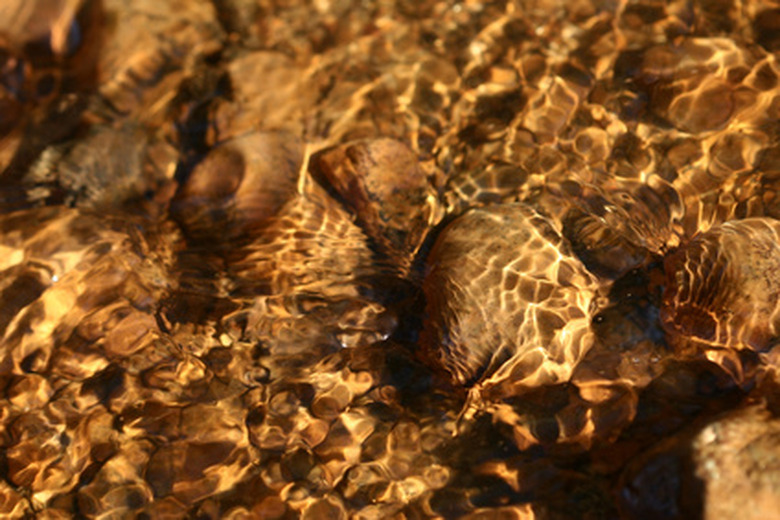What Does Gold Ore Look Like?
To the untrained eye, gold ore may look like rock with copper tones flowing within it. However, professional prospectors know how to recognize gold ore within a multitude of minerals. Recognizing the look and the location of gold ore is easier if you know how to find lode and placer deposits. General descriptions of gold ore vary because gold travels when it is exposed to the elements.
The Basics
The Basics
Lode deposits of gold containing minerals are the result of volcanic activity, so minerals like quartz may appear near gold. Another type of gold ore is the result of cementing within hosts of sedimentary rocks after making its way down a river.
Variables
Variables
The ways that gold collects in minerals will shape the look of gold ore. So if you are looking for big chunks of gold in gold ore, restrict your search to ore within lode deposits—these are the sites where tectonic activity brings gold into existence. Since gold originally forms in large veins, gold ore from these sites has an obvious amount of gold in them. If size does not matter, small flecks of gold are common within placer deposit gold ore. Placer deposits of gold ore may resemble the region's sedimentary rocks.
Features
Features
The absence of cleavage with the ore's gold is a notable feature. Evidence of quartz and sulfide minerals surrounding gold veins may be clear. Gold ore can look like quartz with streaks or spotty areas of gold.
Expert Insight
Expert Insight
The Environmental Protection Agency says that gold is commonly alloyed with silver and other metals. So indicators of the presence of sulfides like arsenic, copper, iron, and silver may also appear within gold ore.
Misconceptions
Misconceptions
A common misunderstanding about the appearance of gold ore is the idea that all gold ore contains visible pieces of shiny gold. While this is sometimes the case, spotting gold within gold ore rocks is occasionally impossible too. A jeweler's loupe can help you distinguish flecks of gold within gold-bearing ore bodies.
Exceptions
Exceptions
Some forms of gold ore make recognizing its gold content challenging. For example, pyrite and arsenopyrite are carriers of invisible quantities of submicroscopic gold. Another obstacle to seeing gold in gold ore occurs when gold entwines with other metals within the ore. Such finely distributed particles of gold only become visible after tests reveal the ore is worthy of processing.
Cite This Article
MLA
Hadley, Christina. "What Does Gold Ore Look Like?" sciencing.com, https://www.sciencing.com/gold-ore-look-like-6522223/. 24 April 2017.
APA
Hadley, Christina. (2017, April 24). What Does Gold Ore Look Like?. sciencing.com. Retrieved from https://www.sciencing.com/gold-ore-look-like-6522223/
Chicago
Hadley, Christina. What Does Gold Ore Look Like? last modified March 24, 2022. https://www.sciencing.com/gold-ore-look-like-6522223/
